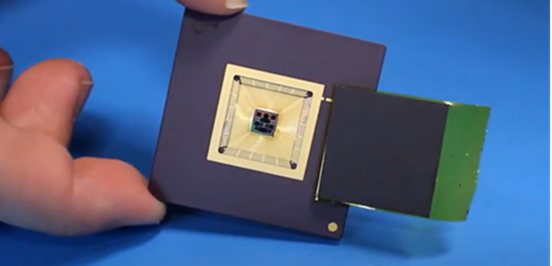Current The Internet of Things (IoT) has evolved significantly in recent years and has become more prevalent in various industries and applications. Furthermore, a significant number of industries are gravitating towards a gradual implementation of autonomous devices that do not require maintenance. However, these kinds of devices present some drawbacks, such as a variable energy harvesting efficiency. Furthermore, the use of batteries and wiring in these technologies make them harder to maintain.
In order to solve the mentioned problems, researchers from the Centro Singular de Investigación en Tecnoloxías Intelixentes (CiTIUS) have developed new microchips (energHius) that allow an efficient harvesting and management of renewable energy. These microchips are designed to capture solar energy, allowing their integration in systems such as sensors, wearable and other electronic devices that work autonomously.
Furthermore, the researchers have designed the energHius microchips in a way so that they require very low power to work, with starting current values lower than 5 nanoamperes.
Solutions have been developed for either on-chip or off-chip light energy harvesting.

As a proof of concept, the researchers have already developed a power management unit based on a conventional CMOS technology and powered by a 1 mm2 solar cell, capable of powering BLE modules. The researchers’ current objectives focus on expanding the power values employed by the microchips, as well as developing modules capable of harvesting alternative sources of renewable energies.
Benefits:
- Cost-efficient technology, as it allows to significantly eliminate the power consumed.
- No batteries or additional equipment are required, hence allowing electronic systems to operate autonomously.
- It represents an environmentally friendly alternative thanks to its capacity of harvesting solar energy.
- Versatile technology, since small modifications of the microchips’ design could allow the use of different AC or DC energy sources.
- The microchips can be designed to meet specifical needs depending on the desired application.
The represented institution is looking for a collaboration that leads to commercial exploitation of the presented invention.
Institution: Universidad de Santiago de Compostela
Contact: Laura Núñez / tech@viromii.com

